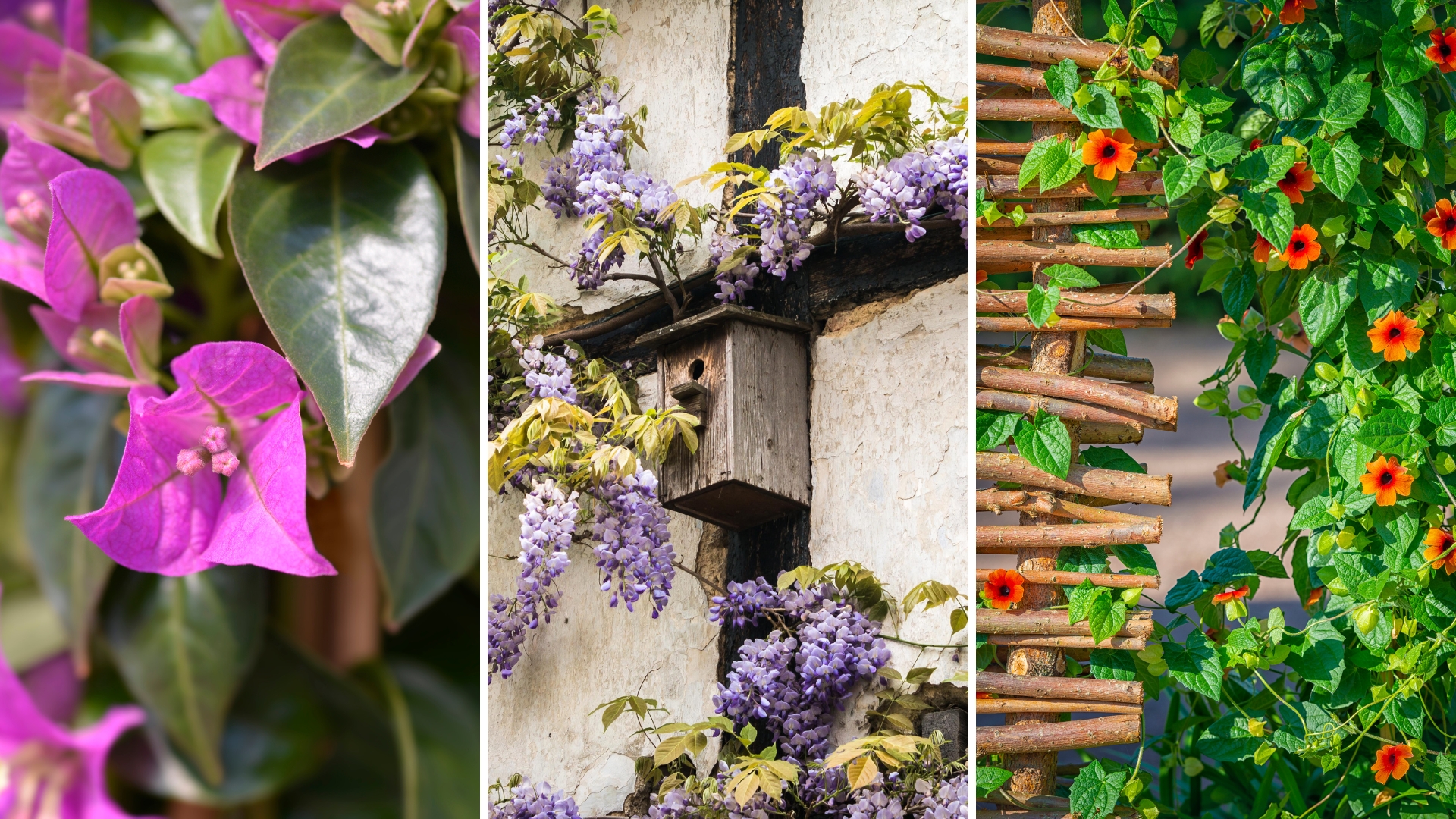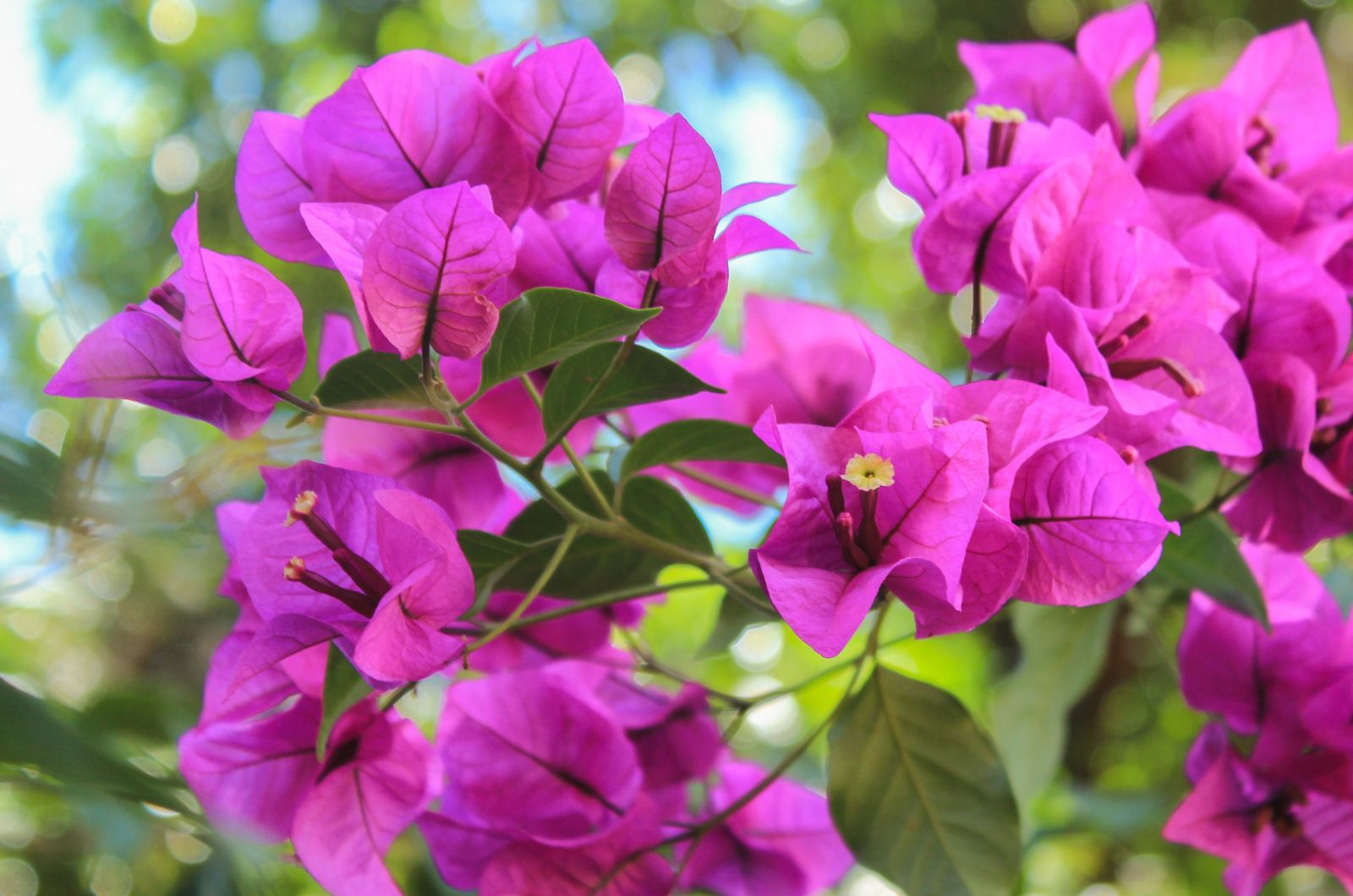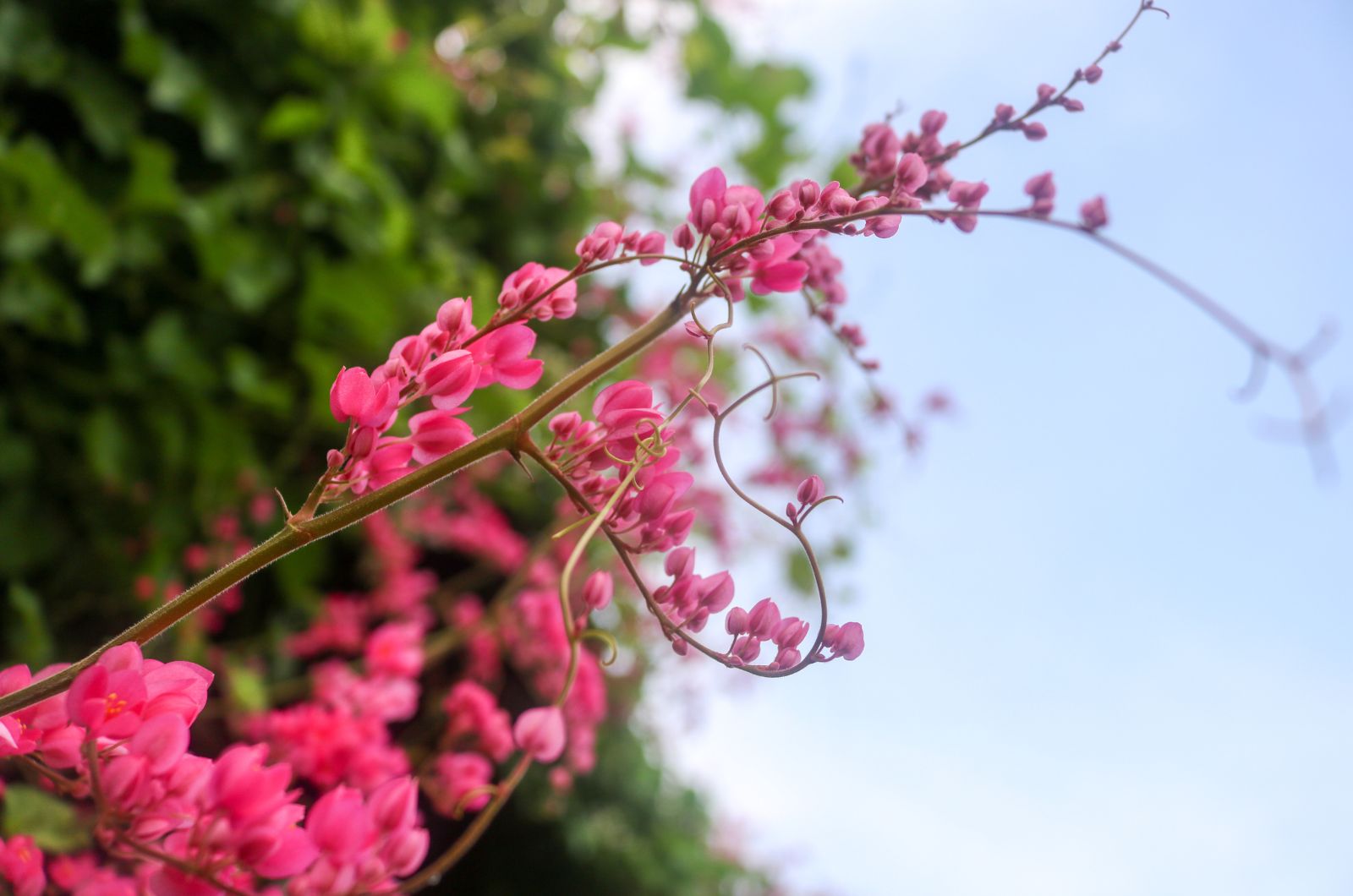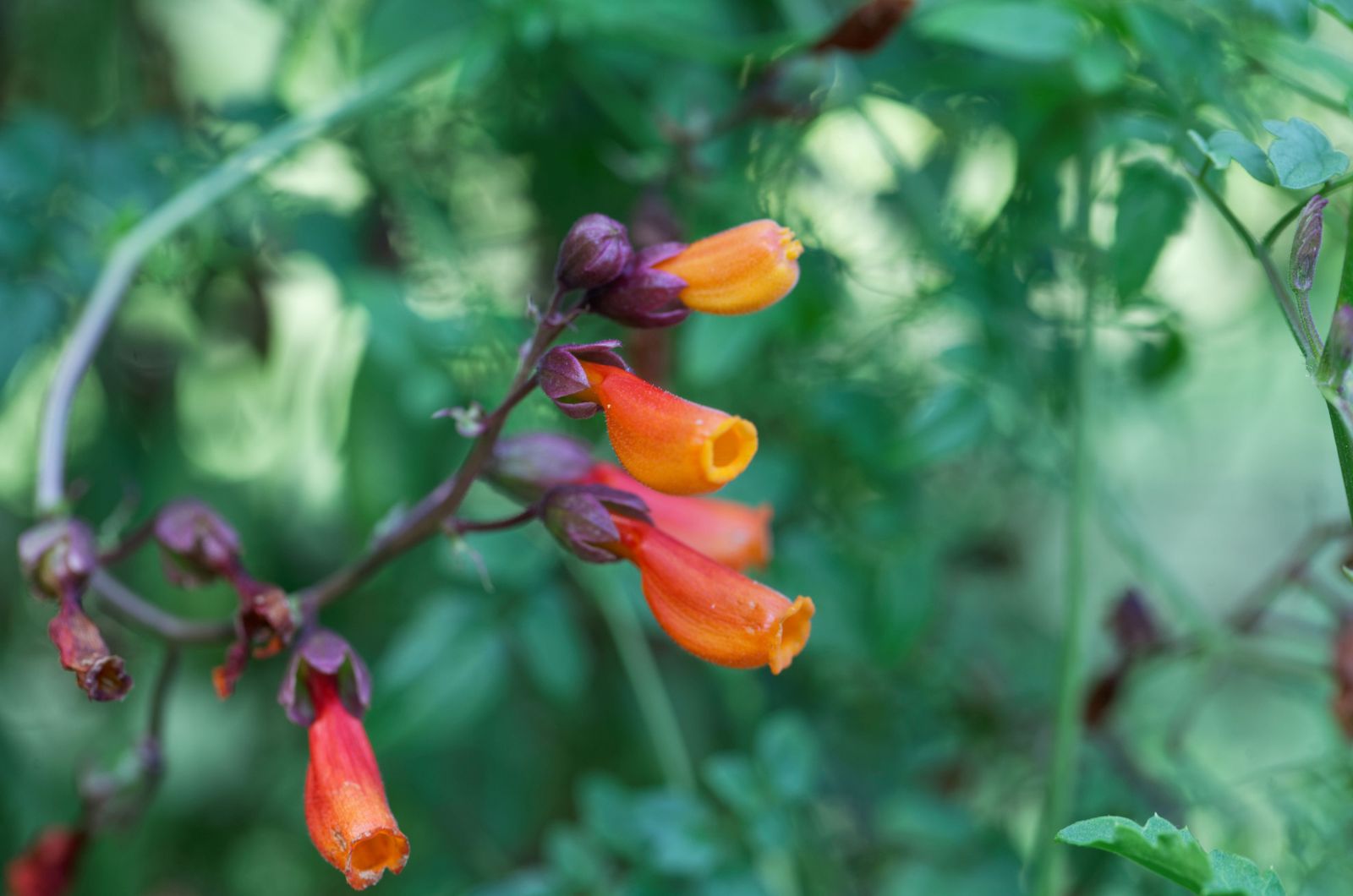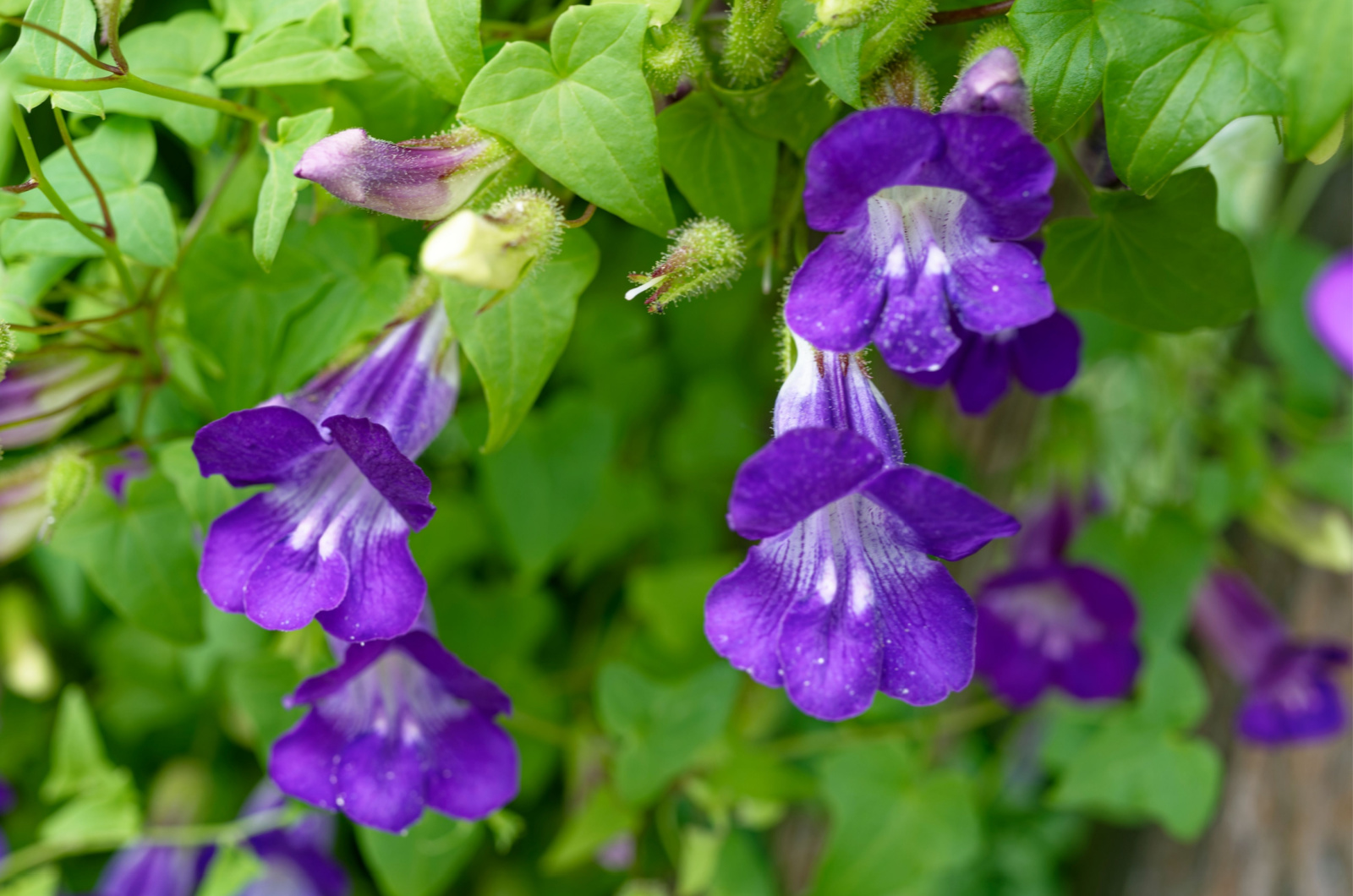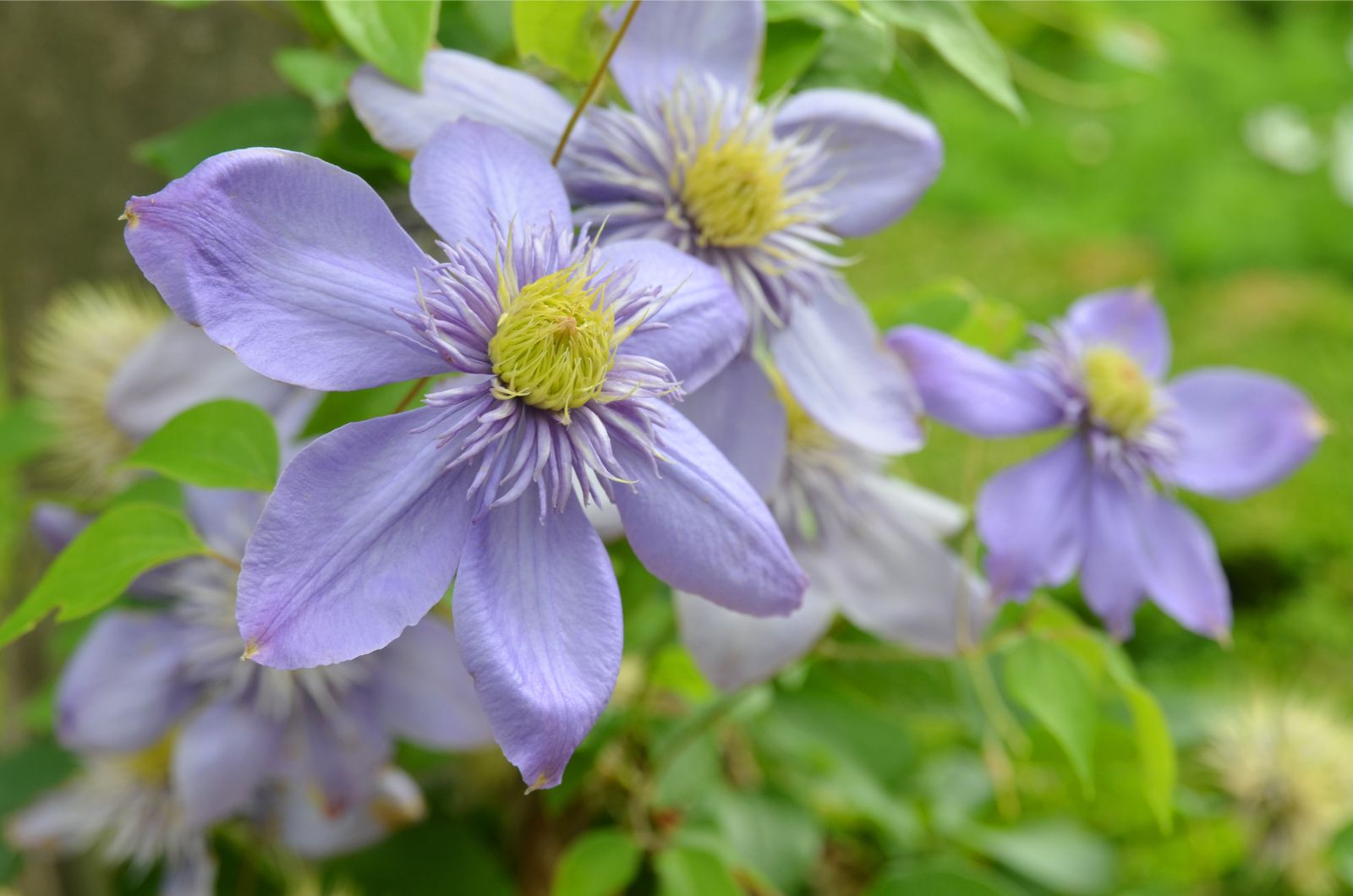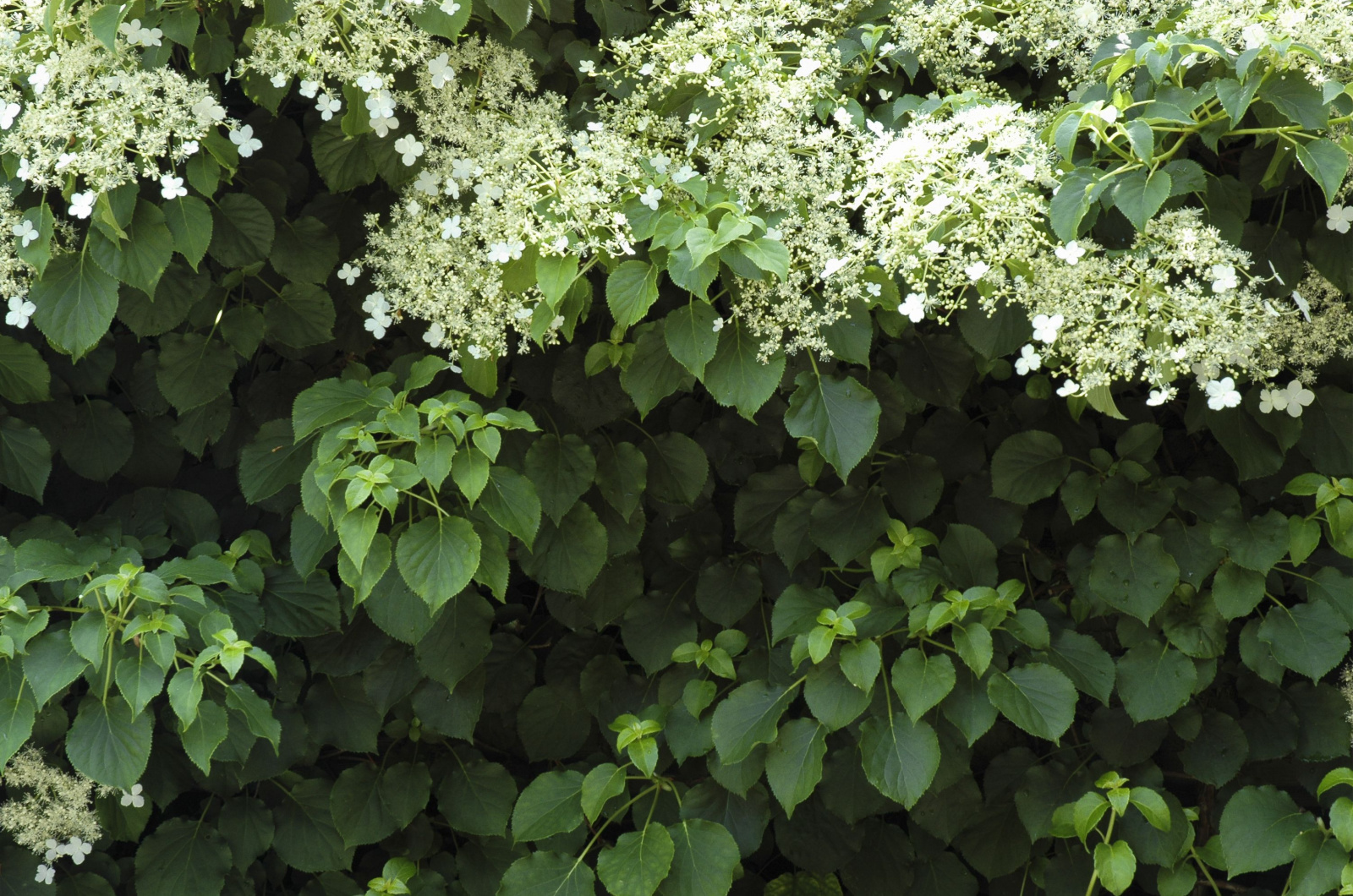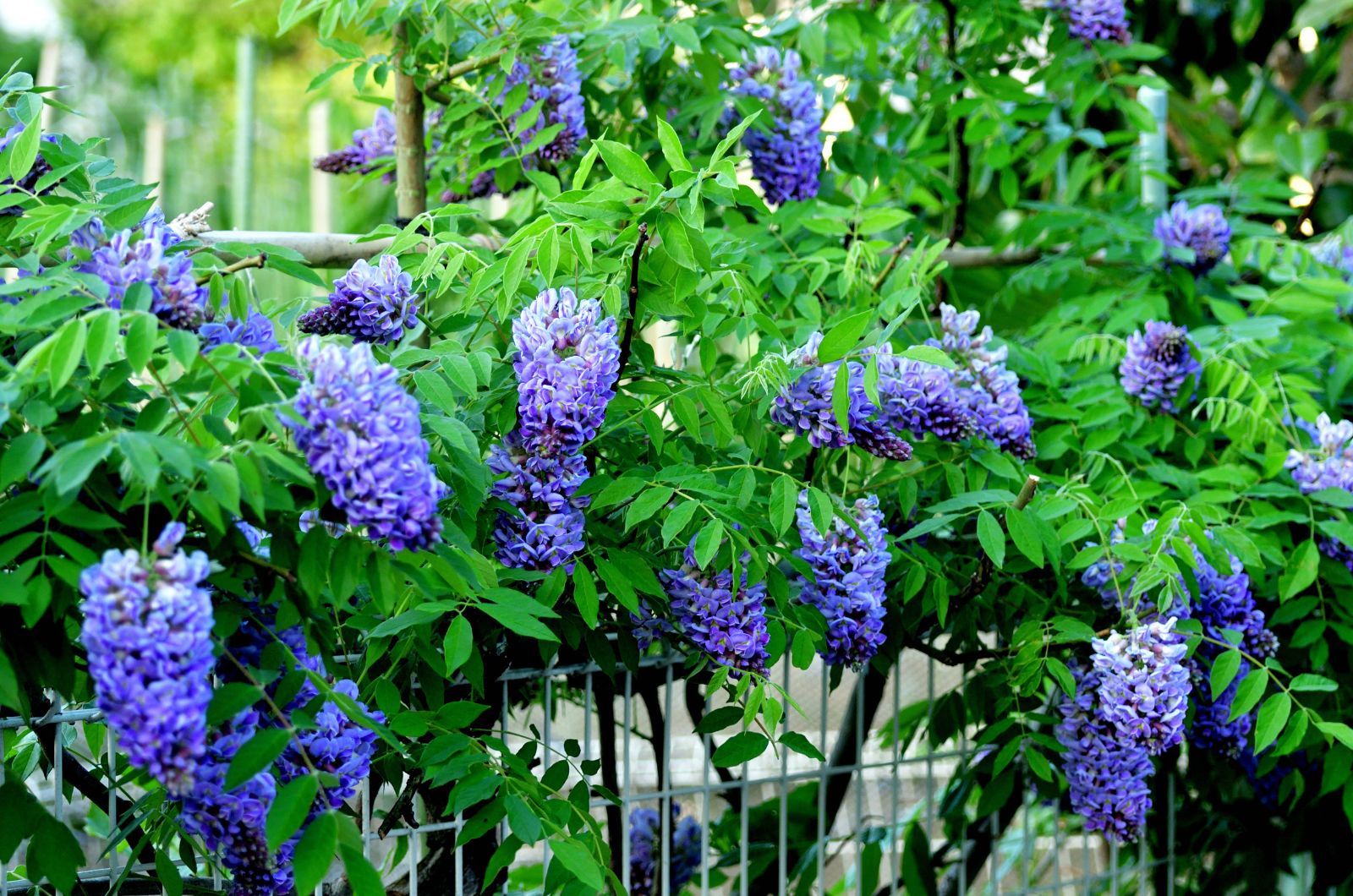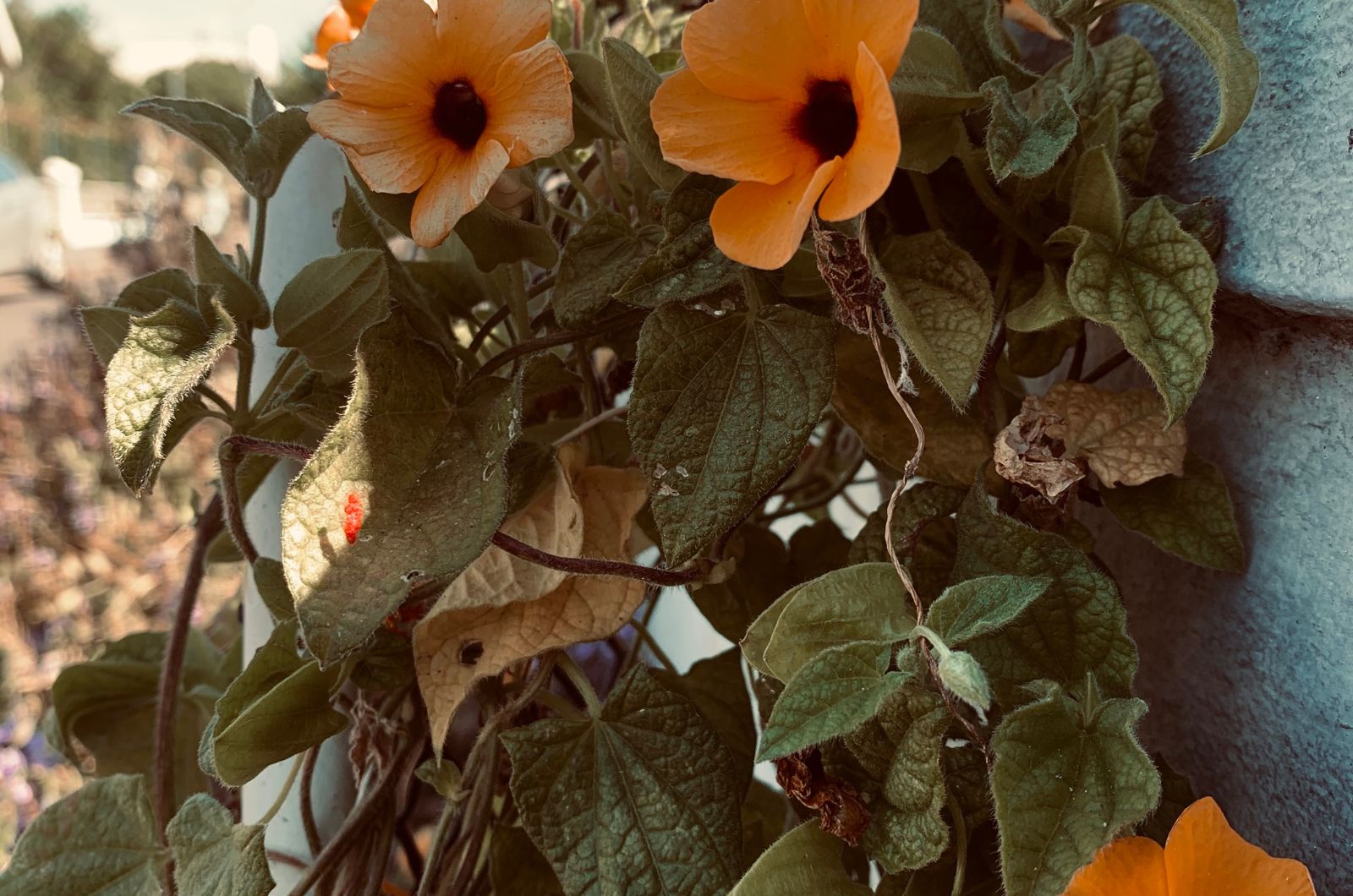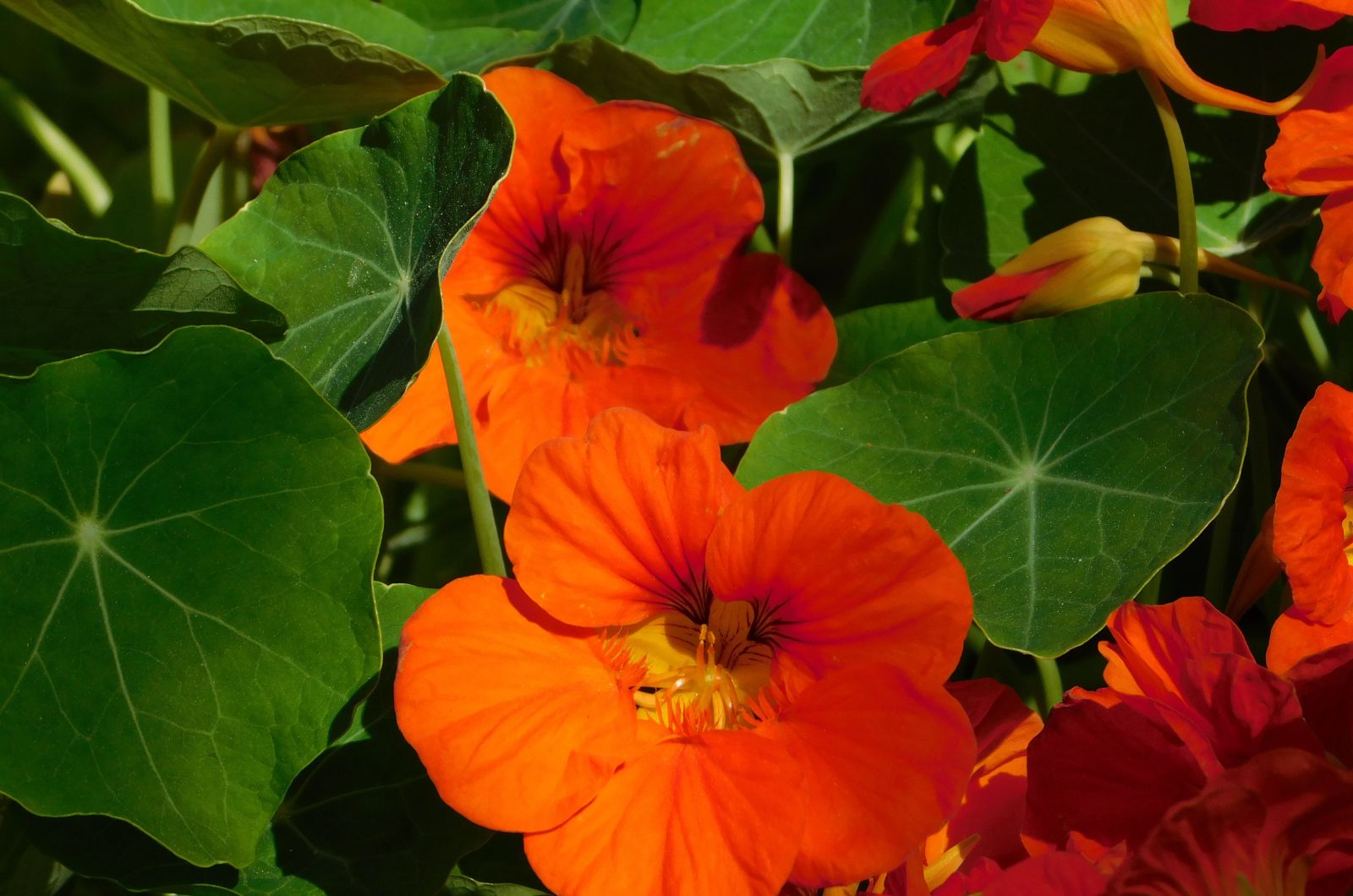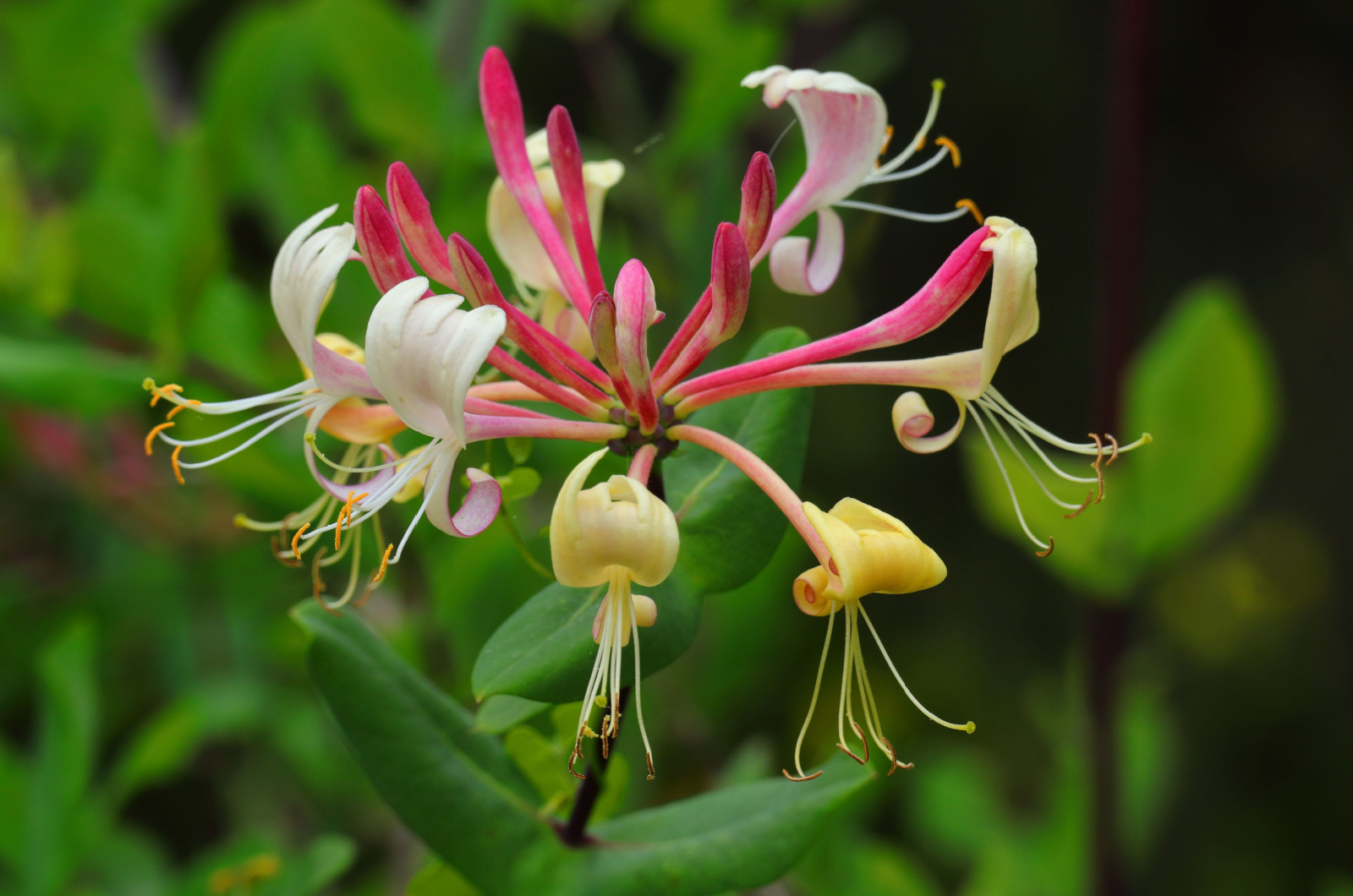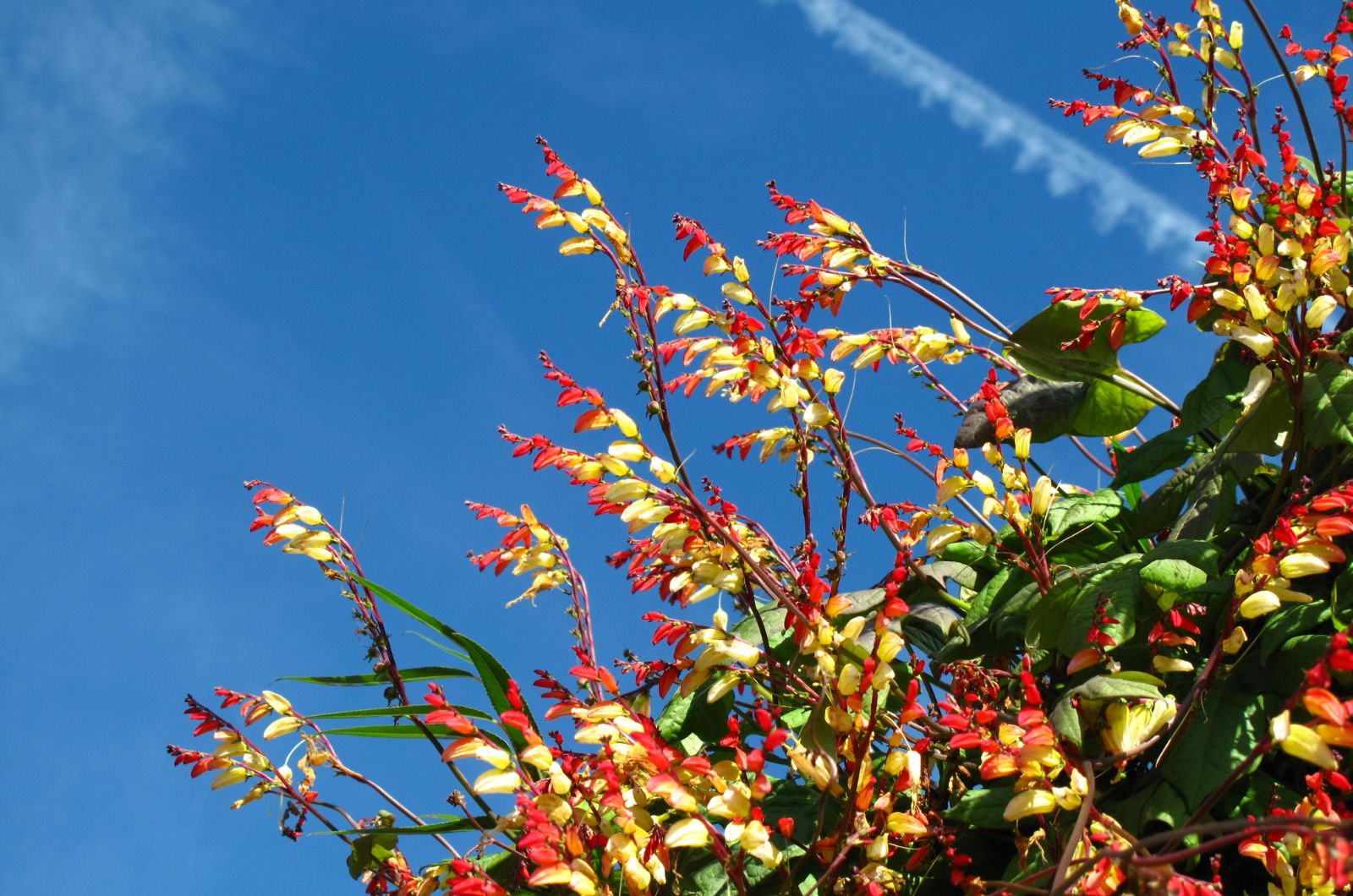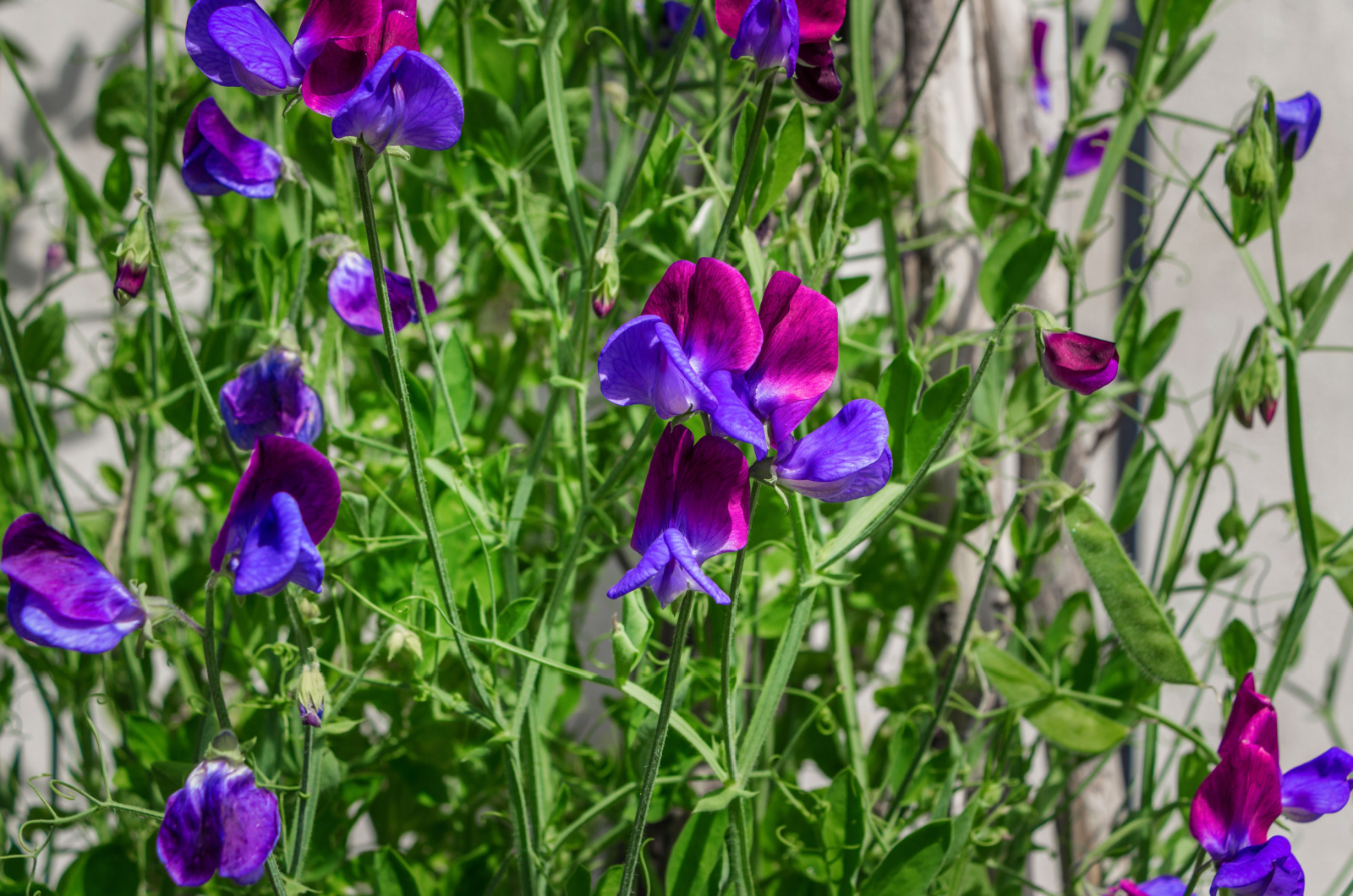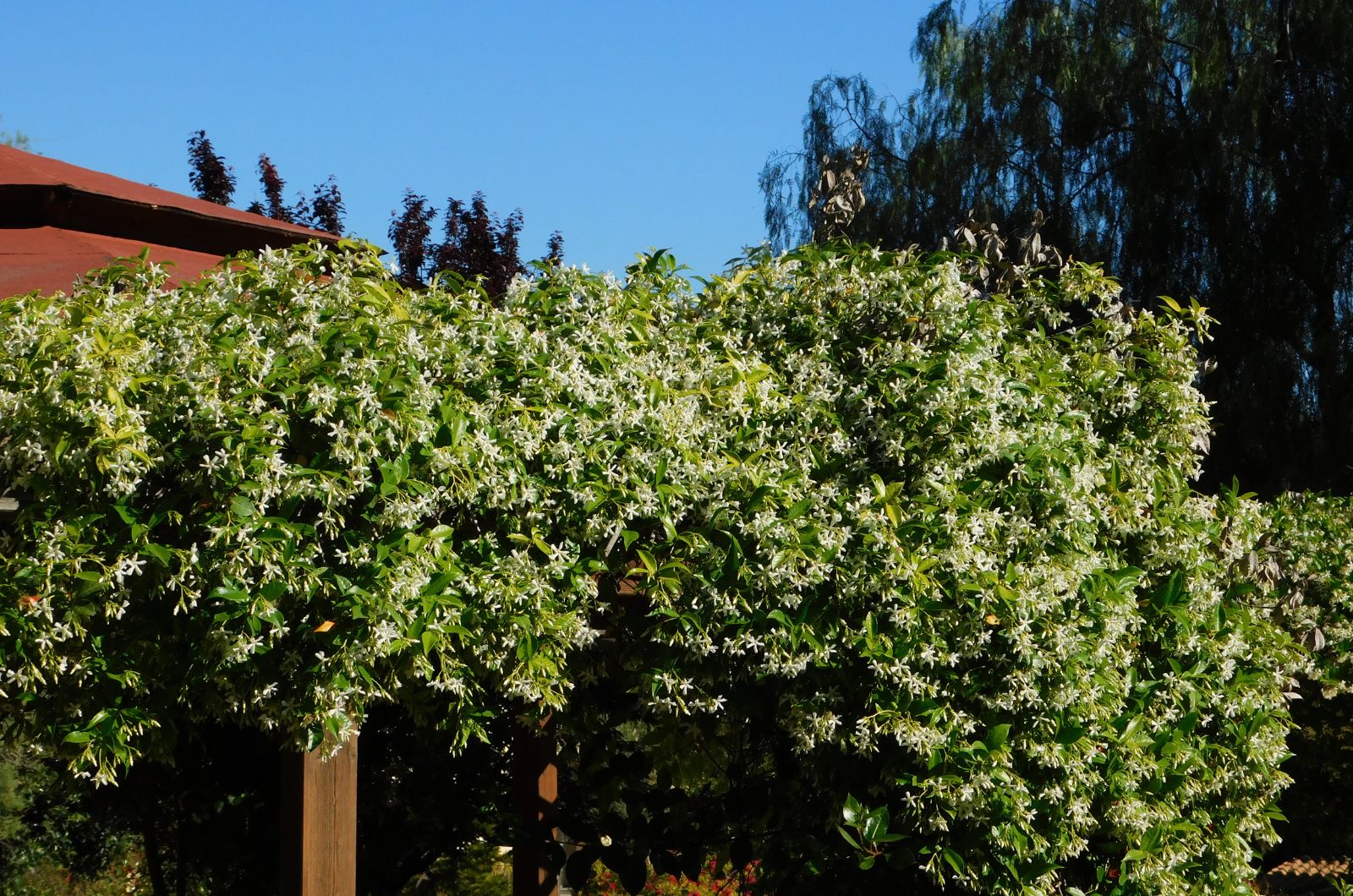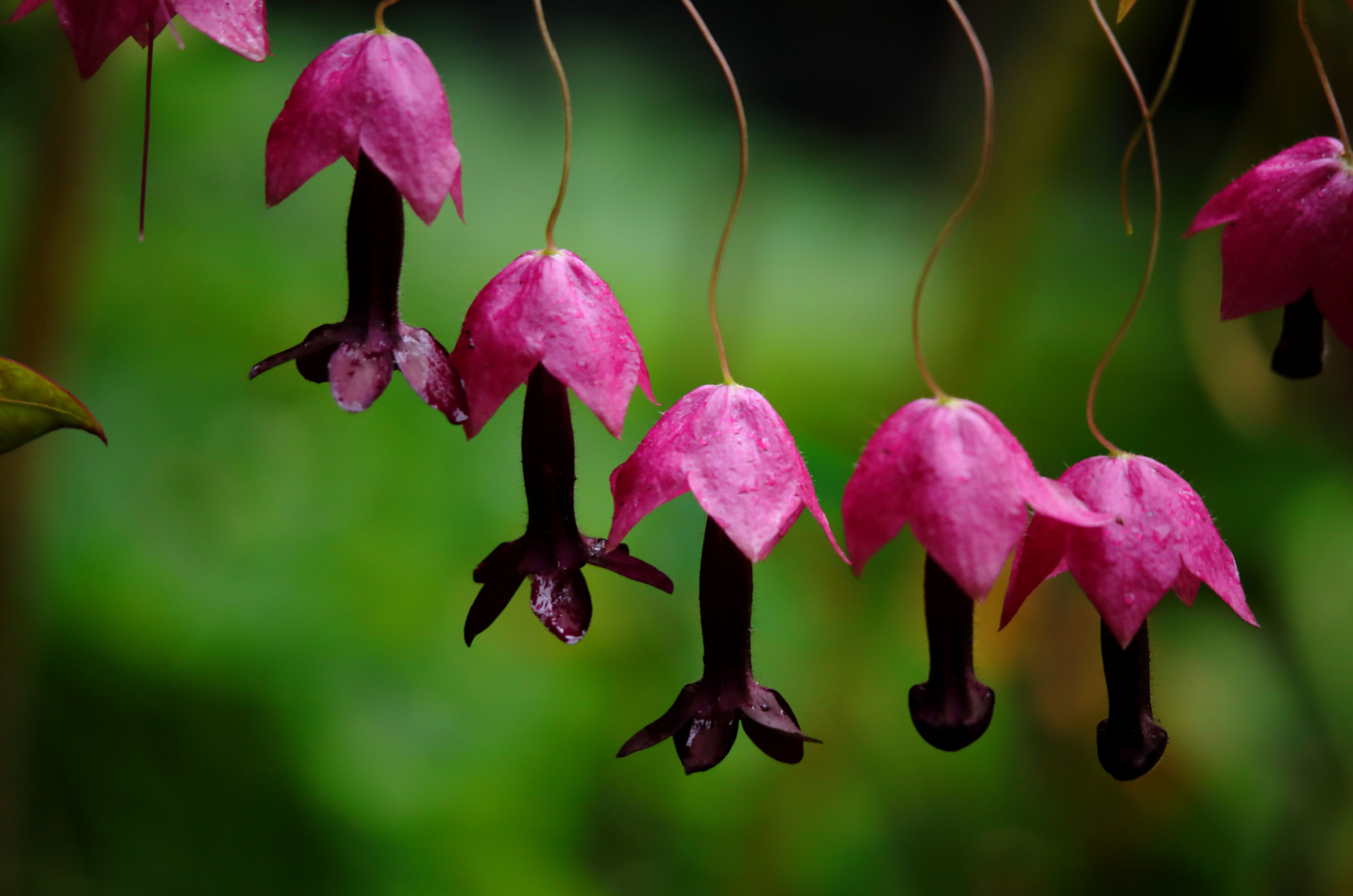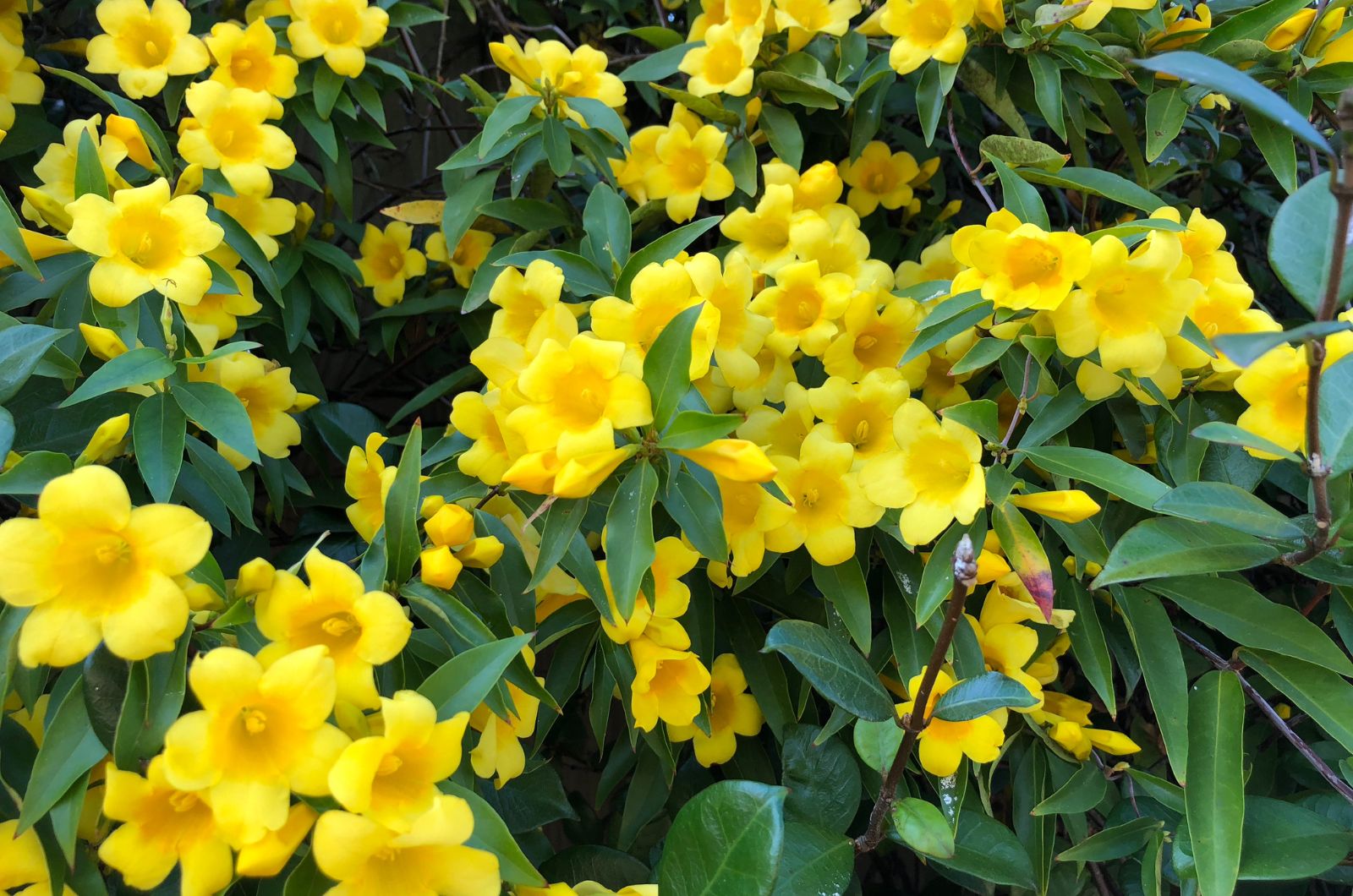Vertical elements such as trellises and arbors make an excellent addition to landscapes, especially if adorned with stunning plants.
If you are unsure which plants can be trained to climb on these structures, don’t worry, I’ve got you covered!
In this article, I’ll show you some well-behaved vines and why they deserve a spot in your outdoor space!
Let’s get started!
1. Alexandra Bougainvillea
Size: Up to 8 feet
Ideal Location: Full sun
USDA Zone: 10 through 11
The first plant on my list is the captivating Alexandra, a bougainvillea variety that will knock everyone off their feet.
Its colorful bracts are surrounded by white and yellow blossoms which will brighten up your space.
Alexandra bougainvillea is native to tropical regions, which means it can only be grown outdoors in warmer USDA zones.
2. Peggy Martin Rose
Size: 15 feet
Ideal Location: Full sun
USDA Zone: 4 through 9
Unlike Alexandra bougainvillea, Peggy Martin rose is a hardy plant that will survive in the harshest conditions. Believe it or not, this plant survived after hurricane Katrina even though it was trapped under salty water for half a month.
If you’re a beginner, this tough rose is everything you need. Its long vines and double-petaled blossoms will last from spring all throughout the summer.
3. Coral Vine
Size: Up to 40 feet
Ideal Location: Full sun
USDA Zone: 8 through 11
If you have large trellises or arbors and you need a large plant, coral vine is a perfect choice. This captivating plant is renowned for its ability to attract various pollinators.
The size of this plant may seem like too much, but remember that coral vine dies back in winter and doesn’t spread aggressively.
Thin twining vines combine perfectly with glossy green leaves and clusters of gorgeous blossoms that come in a coral hue.
4. Chilean Glory Flower
Size: Up to 15 feet
Ideal Location: Full sun to partial shade
USDA Zone: 8 through 11
If you want to spice things up in your landscape, consider growing a Chilean glory flower. Even though the plant is intended for cultivation in warmer climates, its tolerance to cold is pretty high.
The Chilean glory flower is typically grown as an annual in cold climates but you can take the cuttings in fall and plant them once the spring arrives.
Hummingbirds adore the tubular orange-red blossoms of Chilean glory flowers, and that’s all your garden needs!
5. Sky Blue Snapdragon Vine
Size: Up to 10 feet
Ideal Location: Full sun to partial shade
USDA Zone: 9 through 10
First things first, the Sky Blue snapdragon isn’t related to plants from the Antirrhinum genus. However, the periwinkle-colored trumpet-shaped blossoms look as captivating as those of true snapdragons.
If your goal is to invite long-tongued bees and hummingbirds to your outdoor space, then the Sky Blue Snapdragon vine should be your choice.
Even though this plant looks best if trained to climb on a trellis or arbor, it can also be grown in a container.
6. Scyphanthus Elegans
Size: Up to 8 feet
Ideal Location: Full sun
USDA Zone: 8 through 11
If you’re an impatient gardener, then the fast-growing Scyphanthus Elegans is an excellent choice. It will make a wonderful addition to your trellis or arbor with its frilly leaves and semi-tubular petals.
What I especially like about the Scyphanthus Elegans is its long blooming season; its lovely blossoms will be in your garden for three to four months during the summer.
The only difficult thing about this plant is pronouncing its name. All jokes aside, the Scyphanthus Elegans has low care requirements and will thrive even with a bit of neglect.
7. Blue Angel Clematis
Size: Up to 15 feet
Ideal Location: Full sun to partial shade
USDA Zone: 4 through 9
Everyone loves clematis plants because of their easy going nature and gorgeous appearance. If you’re in love with their showy blossoms, then you’ll be enchanted by the Blue Angel variety that produces larger flowers than most of the varieties.
You don’t need to put a lot of effort into looking for a spot for your Blue Angel because it thrives in partial shade and has a high tolerance to salts in the soil.
However, you’ll need to prune this clematis regularly in order to prevent its vines from tangling.
8. Climbing Hydrangea
Size: Up to 50 feet
Ideal Location: Full sun to partial shade
USDA Zone: 4 through 9
Hydrangeas are one of the most common flowering plants in landscapes and the main reason is their fascinating blossoms.
If you have a trellis or arbor, then you should go with climbing hydrangeas. They can reach up to 50 feet under optimal conditions and are easily trained to climb onto various structures.
Even if you live in cooler climates, you can still have a wonderful display of lacecap-like flowerheads.
9. American Wisteria
Size: Up to 30 feet
Ideal Location: Full sun
USDA Zone: 5 through 9
Wisterias don’t have a really good reputation because they spread uncontrollably and some varieties are considered invasive.
That is why you should go with American wisteria because this species knows how to behave. It’s not considered invasive and it’s pretty easy to train it to climb.
Fragrant clusters of lavender-colored blossoms are magnets for bumblebees.
10. Black-Eyed Susan Vine
Size: Up to 8 feet
Ideal Location: Full sun
USDA Zone: 10 through 12
The first thing I have to mention is that this species has nothing to do with plants from the Rudbeckia genus. It got its name because of the resemblance of its blossoms that are large, single, yellow or orange, and have deep purple throats.
The vines are adorned with dark-green heart-shaped foliage that looks amazing with blossoms that last from early spring all the way through the fall.
11. Trailing Nasturtium
Size: Up to 10 feet
Ideal Location: Full sun to partial shade
USDA Zone: 2 through 11
Gardeners love nasturtiums, and that isn’t only because of their appearance. These species make excellent companions in veggie gardens, plus all the parts are edible.
The parasol-shaped leaves grow on 10 feet long vines and look perfect next to the amazing brightly colored blossoms.
These plants are considered annuals and the good thing is that they won’t take over your garden.
12. Peaches And Cream Honeysuckle
Size: Up to 10 feet
Ideal Location: Full sun to partial shade
USDA Zone: 4 through 9
Honeysuckle plants are always a good choice for gardens, but if you need a unique variety, then go with Peaches And Cream.
What I especially like about this honeysuckle is that it boasts a remarkable lifespan, returning reliably each spring for two decades or more.
Peaches And Cream doesn’t exceed 10 feet, so you don’t have to worry it will spread uncontrollably.
A combination of the purple, white, and peach blossoms of this honeysuckle will add a unique touch to your outdoor space.
Pollinators adore honeysuckle blossoms and you’ll have more wildlife in your garden because after the flowers of the Peaches And Cream fade, they give rise to purple and red berries.
13. Firecracker Vine
Size: Up to 16 feet
Ideal Location: Full sun
USDA Zone: 9 through 11
This plant belongs to the Ipomoea genus, which means it’s a cousin of the famous Morning Glory species.
The Firecracker Vine is a sun-loving perennial and performs best if grown in warmer climates.
Displaying tri-lobed leaves and clusters of stunningly vibrant flowers that come in warm hues, the Firecracker Vine plant is a visual delight.
Make sure to plant it in full sun so that it can reach its full blooming potential. Additionally, ensure a quick-draining soil, keep it consistently moist, and thin the leaves of your Firecracker Vine to promote airflow.
14. Royal Navy Sweet Pea
Size: Up to 8 feet
Ideal Location: Full sun
USDA Zone: 3 through 9
If you train a Royal Navy Sweet Pea to climb on your trellis, you’ll get an absolutely spectacular display.
As the name suggests, the blossoms come in royal blue and have a sweet fragrance. The Royal Navy is just as easy to grow as other Sweet Pea plants.
The only problem with this plant is that it can reseed aggressively, so make sure to remove the blossoms before they go into seeds.
15. Star Jasmine
Size: Up to 20 feet
Ideal Location: Full sun to partial shade
USDA Zone: 8 through 10
And here comes the star of the show, the stunning Star Jasmine. This is a pretty hardy plant that has a moderate growth rate.
The star shaped blossoms and colorful foliage appear in late spring and last all through the fall.
You may already know that jasmines are highly scented plants, and star jasmine isn’t an expectation. The scent is more prominent during the night, which will make walks through your garden an incredible experience.
16. Purple Bell Vine
Size: Up to 10 feet
Ideal Location: Full sun to partial shade
USDA Zone: 10 through 12
If you prefer more exotic plants then the Purple Bell Vine is all your trellises and arbors need. This Mexican native is renowned for its heart-shaped foliage and magenta and burgundy blossoms with long petal tubes.
Purple Bell Vine is a warm-weather plant, so if you live in cooler climates, I recommend growing it as an annual.
17. Carolina Jessamine
Size: Up to 20 feet
Ideal Location: Full sun to partial shade
USDA Zone: 6 through 9
And the last plant on my list is the breathtaking Carolina Jessamine. The name itself sounds elegant and that’s the perfect way to describe this plant.
It produces scented yellow blossoms and isn’t finicky about the growing conditions. Once mature, Carolina Jessamine is pretty drought-tolerant and can withstand heavy pruning, so don’t worry if it will spread aggressively.
If you have trellises or arbors in your outdoor space, any of these vining beauties will fit perfectly and add a special touch of beauty!

